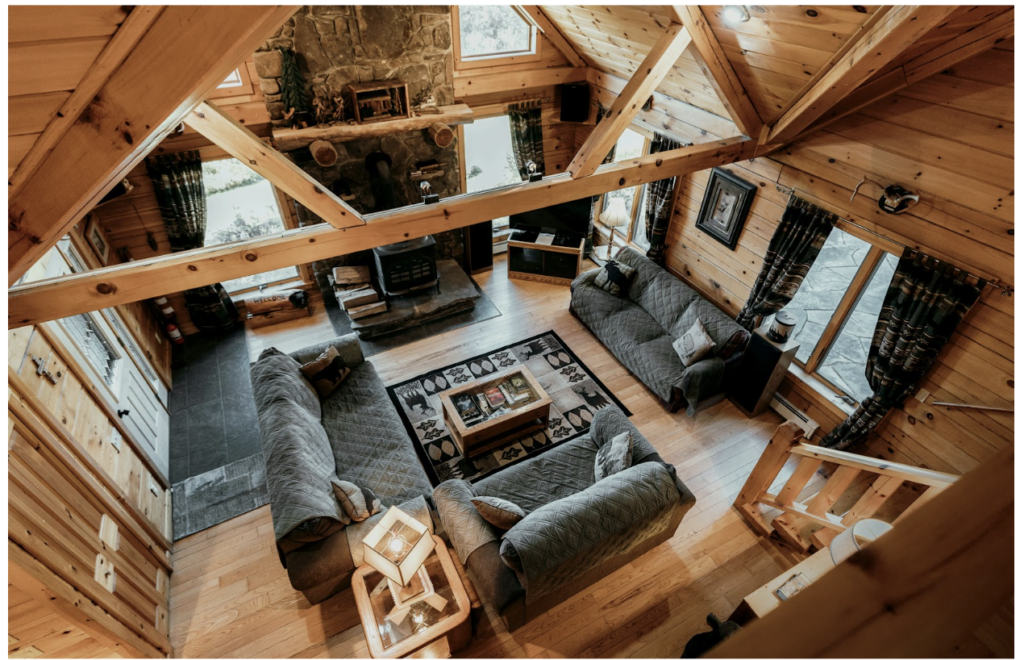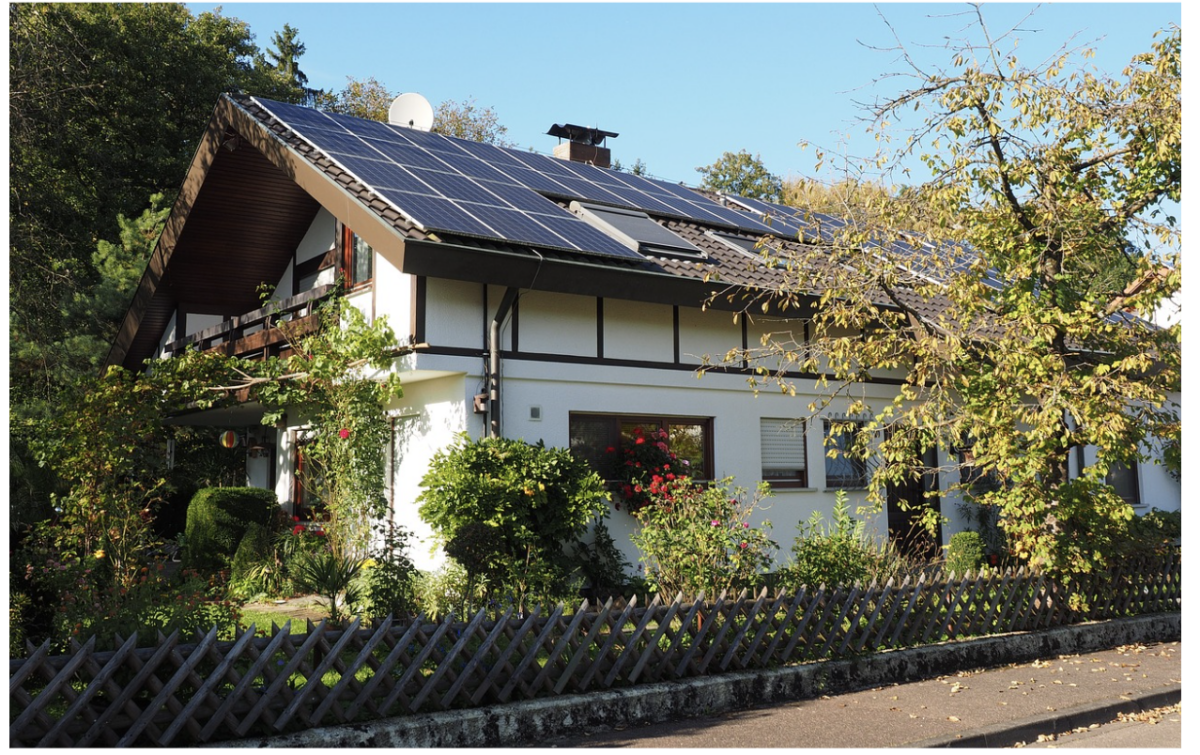Transforming your home into an eco-friendly haven doesn’t have to be daunting. With the right tips and strategies, you can make sustainable choices that benefit your living space and the planet.
Discover how you can enhance energy efficiency, reduce waste, and create a healthier environment—all while maintaining style and comfort.
1 – Utilize Reclaimed and Recycled Materials
Incorporate materials such as reclaimed wood, recycled metal, and glass. This approach decreases the need for new resources and breathes new life into old materials, contributing to a more sustainable environment.
For unwanted critters in these materials, consulting with an expert in keeping pests at bay can ensure a smooth and worry-free renovation process.
2 – Opt for Energy-Efficient Appliances
Replace old appliances with energy-efficient models that have the ENERGY STAR label. They consume less energy, reducing carbon footprint and lowering utility bills.
3 – Install Solar Panels
Consider installing photovoltaic panels. They can significantly reduce your reliance on non-renewable energy sources and decrease electricity bills.
4 – Improve Insulation
Proper insulation in walls, roofs, and floors can drastically reduce the need for heating and cooling, making your home more energy-efficient.
5 – Choose Low-VOC Paints and Finishes
Volatile Organic Compounds (VOCs) found in some paints and finishes can harm your health and the environment. Opt for low or zero-VOC products.
6 – Install Water-Saving Fixtures
Use low-flow toilets, showerheads, and faucets to reduce water consumption. Consider a rainwater harvesting system for irrigation needs.
7 – Use Sustainable Flooring
Choose flooring made from sustainable materials such as bamboo, cork, or recycled materials. These options are durable and have a lower environmental impact.
8 – Implement Passive Solar Design
Design your home to take advantage of natural sunlight for heating and lighting. Use large windows, skylights, and thermal mass to store and distribute solar energy.
9 – Upgrade Windows and Doors
Energy-efficient windows and doors can prevent heat loss in the winter and keep your home cooler in the summer. Look for double-glazed or triple-glazed options.
10 – Practice Waste Reduction and Recycling
Minimize waste by carefully planning material needs, recycling demolition debris, and donating usable items to salvage stores.
Benefits Of Sustainable Home Remodeling
Sustainable home remodeling offers numerous advantages that extend beyond just environmental impact.
Energy Savings
One of the most immediate benefits is the reduction in energy consumption.
Using energy-efficient appliances, better insulation, and renewable energy sources like solar panels can lower utility bills. This saves money and reduces your carbon footprint.
Healthier Living Environment
Sustainable remodeling often involves using non-toxic materials and improving ventilation. This leads to better indoor air quality, which reduces allergies and respiratory issues.
Increased Home Value
Homes with sustainable features often have higher market values. Energy-efficient windows, solar panels, and eco-friendly materials can make your home more attractive to potential buyers.
Reduced Waste
Sustainable remodeling emphasizes waste reduction. Strategies like recycling old materials, using reclaimed wood, and planning projects to minimize excess can significantly decrease construction waste.
Enhanced Comfort
Eco-friendly homes often provide a more comfortable living experience. Improved insulation, energy-efficient windows, and smart thermostats help maintain a consistent indoor temperature.
This makes your home more comfortable year-round, regardless of the weather outside.
Long-Term Savings
While the initial investment in sustainable remodeling might be higher, the long-term savings are substantial. Lower energy bills, reduced maintenance costs, and potential tax incentives can offset the upfront costs.
Over time, these savings add up, making sustainable remodeling a financially wise choice.
Community and Global Benefits
Sustainable remodeling can also have broader social benefits. Supporting local businesses and using locally sourced materials can boost the local economy.
Additionally, reducing your home’s environmental impact contributes to global efforts to combat climate change and preserve natural habitats.
The benefits are far-reaching, making it a smart and responsible choice for any homeowner.
Reduce Waste During Home Renovation

When choosing sustainable products for your home remodel, certifications and labels can guide you toward eco-friendly options.
These certifications ensure that products meet specific environmental standards, helping you make informed decisions.
LEED Certification
The Leadership in Energy and Environmental Design (LEED) certification is a globally recognized symbol of sustainability achievement.
Products with LEED certification have undergone rigorous testing to ensure they contribute to a building’s overall energy efficiency and environmental impact.
Look for LEED-certified products to ensure your remodel aligns with green building standards.
FSC Certification
The Forest Stewardship Council (FSC) certification ensures that wood products come from responsibly managed forests that provide environmental, social, and economic benefits.
When selecting wood for flooring, cabinetry, or furniture, look for the FSC label to support sustainable forestry practices.
Cradle-to-Cradle Certification
Cradle to Cradle certification assesses a product’s safety to humans and the environment and its design for future life cycles. This certification covers material health, reutilization, renewable energy use, water stewardship, and social fairness.
Opt for Cradle to Cradle certified products to ensure they are safe, sustainable, and designed for a circular economy.
Greenguard Certification
Greenguard certification indicates the product has low chemical emissions, contributing to healthier indoor air quality. This certification is important for building materials, furniture, and finishes.
Select Greenguard-certified products to minimize indoor air pollution and create a safer home environment.
WaterSense Label
The WaterSense label, sponsored by the U.S. Environmental Protection Agency, identifies water-efficient products and practices. Incorporate WaterSense products to conserve water and reduce utility costs.
By paying attention to these certifications and labels, you can confidently choose sustainable products that enhance your home’s eco-friendliness and contribute to a healthier environment.
DIY Projects for an Eco-Friendly Home
Transforming your home into an eco-friendly haven doesn’t always require professional help. Here are some DIY projects that can significantly boost your home’s sustainability:
- Install Energy-Efficient Lighting: Swap out incandescent bulbs for LED or CFL bulbs. These options use less energy and last longer, reducing your electricity bill and waste.
- Seal Windows and Doors: Use weatherstripping and caulk to seal gaps around windows and doors. This simple project can prevent drafts, improve insulation, and reduce heating and cooling costs.
- Create a Compost Bin: Set up a compost bin in your backyard to recycle kitchen scraps and yard waste. Composting reduces landfill waste and provides nutrient-rich soil for your garden.
- Build a Rain Barrel: Collect rainwater from your roof using a rain barrel. This water can be used for gardening, reducing your reliance on municipal water and lowering your water bill.
- Install a Programmable Thermostat: This allows you to set heating and cooling schedules, optimizing energy use and saving money.
- Upgrade to Water-Saving Fixtures: These fixtures reduce water usage without sacrificing performance, helping you conserve water and lower utility bills.
- Create a Recycled Garden: Use old containers, pallets, and other recycled materials to create planters and garden beds.
- Insulate Your Water Heater: Wrap your water heater in an insulating blanket to reduce heat loss.
These DIY projects can make your home more eco-friendly, save money, and contribute to a healthier planet.
| Expert Tip: Use HEPA-filtered vacuums to clean up fine particles and ensure that all surfaces are dry before applying new materials. |
Summary
Sustainable home remodeling offers numerous benefits, from reducing energy costs to improving indoor air quality. To maximize your impact, focus on cost-effective strategies and water conservation practices.
Ensure your project remains sustainable by working with green contractors and following best practices. Embrace these tips to transform your home into an eco-friendly haven.




